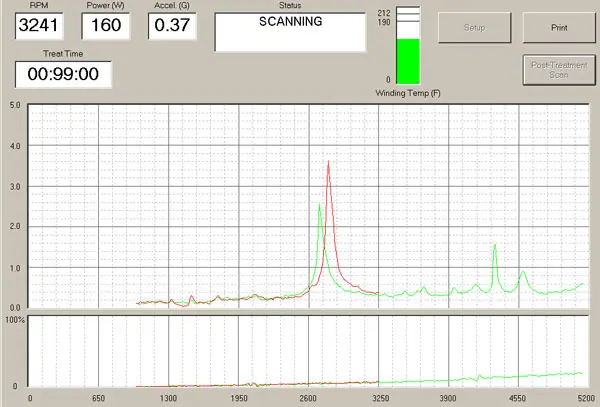Conditioning Equipment with VSR for Better Performance
Offering Quality Vibratory Stress Relieving Solutions
Conditioning Equipment for Better Performance
Offering Quality Vibratory Stress Relieving Solutions
Conditioning Equipment for Better Performance
Offering Quality Vibratory Stress Relieving Solutions
The Vibratory Stress Relief (VSR) Process
The Vibratory Stress Relief (VSR) Process is a method of reducing residual stress levels in metal components, resulting in improved dimensional stability and overall mechanical integrity. This allows subsequent manufacturing operations, such as machining, assembly, testing, transport, commissioning, and usage to take place with minimal quality issues.
The process works by flexing the workpiece with sufficient amplitude to cause plastic flow on a mildly microscopic level within the material. Such plastic flow is a fundamental aspect of all forms of stress relief, whether purposeful (using heat or vibration) or incidentally, during transport, or over a long time period (sometimes called “curing”). Changes in the workpiece’s resonance pattern accompany stress relief, in the form of resonance peak growth, which can be accompanied by some resonance peak shifting, such as this example:

VSR Treatment Charts Consist of Two Portions
Green is the original, Pre-Treatment Scan (which functions as a baseline/reference).
Red is the Post-Treatment Scan (which was in progress during this screenshot).
Note that the large peak has both grown by 50%, and has shifted to the right by 5%.
Shifting often occurs to the left, in the opposite direction (as shown in the VSR logo) but, as this example illustrates, there are exceptions. Often peaks only grow (less than 1% peak shift in either direction) which is why both peak height and frequency must be monitored during treatment: Changes in real-time peak position (both amplitude and frequency) indicate stress relief is underway.
There are no changes during a VSR Treatment to the material’s physical properties. This underscores one of the advantages of the VSR Process over Thermal Stress Relief (TSR), for applications upon austenitic stainless steel components and low-carbon, high-strength steel fabrications. TSR poses serious risks to such materials: With austenitic stainless, the development of the corrosive sigma-phase; with low-carbon, high-strength steel weldments, the reduction in the material’s strength and toughness, and possibly crack initiation. Also worth noting, during TSR of mild-steel, little or change in physical properties occurs.
